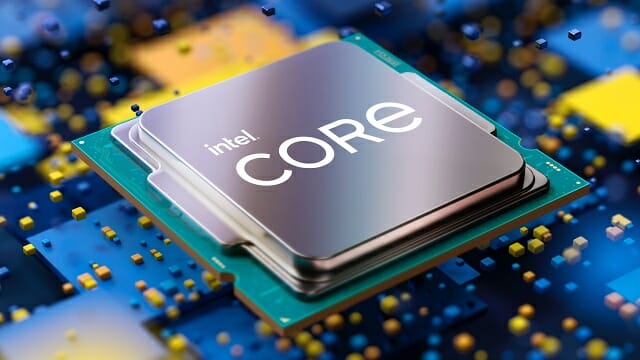
From the end of this month, Intel will start selling 11th-generation core processors for desktops (developed by’Rocket Lake’) to global markets including Korea. It has been about 10 months since the launch of the 10th generation core processor for desktops in May of last year.
The 11th generation core processor for desktop is produced in the 14nm (nanometer) process by mixing the internal structure of the 10th generation core processor (Ice Lake) and the Xe graphics chipset applied from the 11th generation core processor.
A total of 19 products, including three lineups including Core i5, i7 and i9, will be supplied to the market, and entry-level processors such as Core i3 and Pentium Gold will still be released based on the 10th generation core processor.
■ Introduced a new architecture in 6 years
The biggest feature of the 11th-gen core for the desktop is the architectural change.
Instead of the architecture maintained after the 6th generation core processor (Skylake) in 2015, it applied’Cypress Cove’, which improved the 10nm process for laptops to 14nm.
Through this, the benefits of the currently released notebook core processor were also brought. DDR4-3200MHz memory support, PCI Express 4.0, and AI performance enhancement are typical examples.

In particular, the built-in graphics chipset will be changed to’UHD graphics 750′ based on Xe graphics, and performance is expected to improve. The lowest product, the Core i5-10400, can also connect up to three displays, and also supports AV1 decoding, an open source codec used by YouTube and Netflix.
■ Last desktop chip to be produced at 14nm
The 11th-generation core processor for desktops to be released this time is likely to be the last mainstream product Intel produces on the 14nm process. All the 11th generation core processors for mobile (laptop) released last year are produced only in the 10nm Superpin process.

Intel responded to the reason why the 10nm-based architecture is produced in the 14nm process, “in order to utilize the operating clock, which is the strength of the 14nm process.” For Intel, it is difficult to abandon the 14nm process, which is still capable of mass production and mature enough.
However, there are limitations that arise when the 14nm process is selected. As the architecture designed for 10nm is brought to 14nm and the number of cores in the built-in graphics chipset increases, the maximum number of cores is limited to eight.

The Core i9-10900K, the top model released last year, ran with 10 cores and 20 threads, while the Core i9-11900K, the top model this year, runs with 8 cores and 16 threads. Intel described this as “the best choice considering available resources and benefits.”
■ Total 19 products supplied..No limited edition
The 11th-generation core processor for desktops is supplied with a total of 19 products in three lineups, including Core i5, i7, and i9. For each product group, the’K’ capable of overclocking, the’F’ excluding the built-in graphic chipset, and the’T’ processor considering low-power environments such as all-in-one PCs will be released together.

If you have a Z490 motherboard released last year, you can upgrade by replacing only the processor after the BIOS update. However, it cannot take advantage of the improved benefits such as PCI Express 4.0 interface and support for DDR4-3200MHz memory.
The biggest difficulty of the 11th generation core processor for desktop is the next generation core processor, Alder Lake.

Elder Lake plans to apply DDR5 memory and PCI Express 5.0 based on a hybrid architecture that combines high-efficiency and high-performance cores. There is also a high possibility that consumers will return to the wait and see tax instead of upgrading.
Related Articles

The 10th anniversary of the launch of Google Chromebook… the market’dream’ for distance education in Corona

Intel suspends overclock processor protection program

“Thunderbolt technology contributes to laptop innovation for 10 years”

Intel “can’t admit infringement of VLSI patent rights…will appeal”
In response, Intel responded, “It will be a problem that all consumers face with the release of new processors every year, but if the operating clock is the most important, I will buy this product without hesitation.”

Intel has been steadily releasing limited-edition processors such as the Core i9-9900KS in 2019 and the Core i9-10900KA’Marvel Avengers’ edition released in the second half of last year. Regarding the availability of limited-edition processors this year, Intel responded, “There are no products planned so far.”
